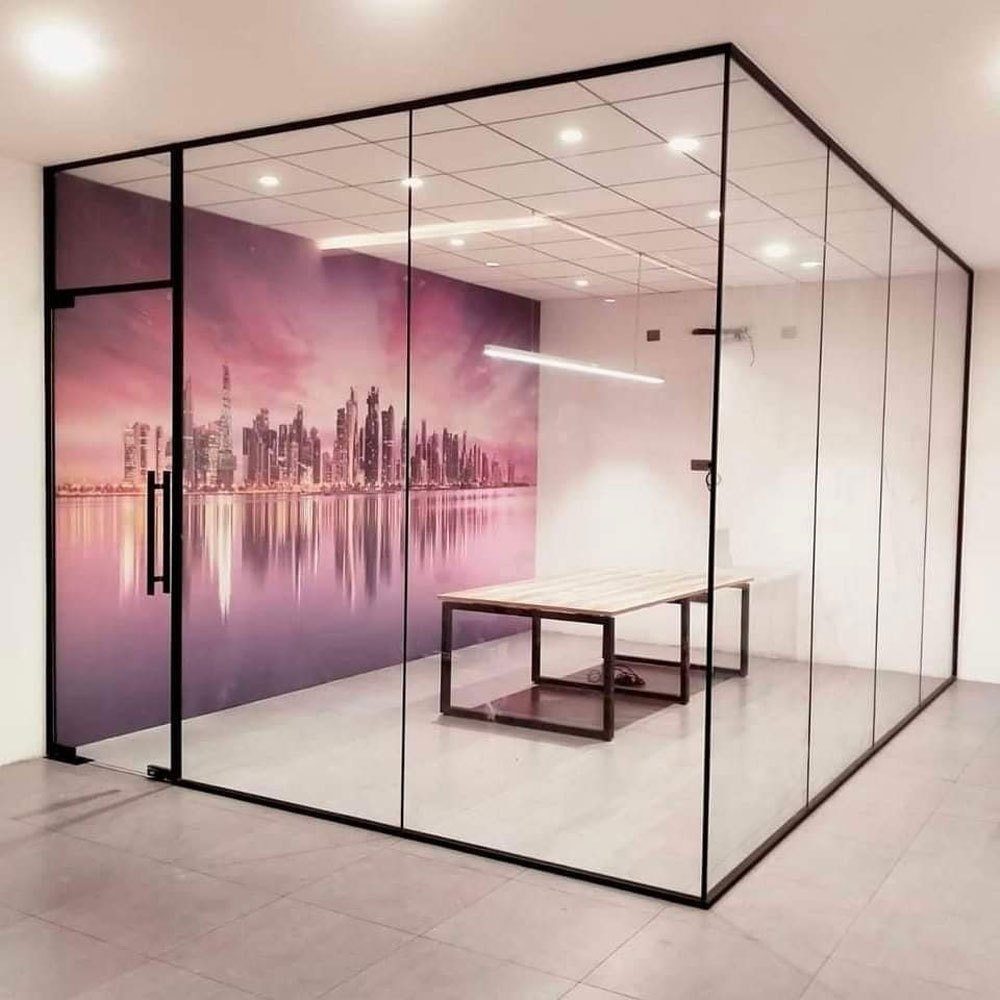Contact : +919900790799
Glass Fabrication Works
Glass fabrication is the process of transforming raw glass into finished products that are used in a variety of applications. These products range from architectural elements such as windows, doors, and facades, to functional items like mirrors, tabletops, and custom-designed glass pieces. The process involves a series of steps, including cutting, shaping, polishing, and sometimes coating, depending on the end use of the glass. The glass fabrication industry plays a crucial role in construction, interior design, automotive, and electronics, among other sectors.
Types of Glass Used in Fabrication
The first step in glass fabrication is selecting the appropriate type of glass. There are several types, including:
- Annealed Glass: Regular glass that is slowly cooled to relieve internal stresses.
- Tempered Glass: Heat-treated glass that is stronger than annealed glass and breaks into small, blunt pieces when shattered, making it safer for use in windows, doors, and vehicles.
- Laminated Glass: Glass sheets bonded with a plastic interlayer, offering safety and soundproofing benefits. It is commonly used in automotive windshields and skylights.
- Low-Emissivity (Low-E) Glass: Glass coated with a thin layer of metal oxide to improve energy efficiency by controlling heat transfer.
- Tinted Glass: Glass with added color or tint for aesthetic purposes or to reduce glare and solar heat gain.
Glass Cutting and Shaping
One of the first steps in glass fabrication is cutting the raw glass into the desired shape and size. This is done using a variety of tools, such as a glass cutter, which scores the surface of the glass, allowing it to be snapped along the scoreline. For more complex shapes, water jets or CNC (computer numerical control) machines may be used to achieve precision cuts. Shaping may also involve bending or curving the glass, which can be done through heating and molding.
Polishing and Edge Finishing
After the glass is cut and shaped, the edges are typically finished for aesthetic and safety reasons. Polishing smooths rough edges, while beveling involves cutting the edges at a specific angle to enhance the appearance of the glass. In some cases, glass may also be sandblasted to achieve a frosted or textured effect.
Glass Coating and Treatments
To enhance the functionality of the glass, various coatings and treatments can be applied. One of the most common is anti-reflective coating, which reduces glare and enhances clarity. Other treatments include UV coatings that protect the glass from the damaging effects of ultraviolet radiation and anti-fog coatings, which prevent condensation on the surface.
Glass tempering is a heat treatment process where glass is heated to a high temperature and then rapidly cooled. This strengthens the glass and makes it four to five times stronger than regular glass. Tempered glass is commonly used for safety applications, such as in shower doors and automobile windows.
Laminating involves bonding two layers of glass with a plastic interlayer, often used in automotive windshields and security glass. This makes the glass more durable and able to hold together when shattered, preventing dangerous shards from flying.
Final Assembly and Installation
Once the glass has been fabricated, it is often assembled into final products such as windows, glass doors, partitions, and custom-designed items like glass countertops or decorative panels. In some cases, additional hardware like frames, hinges, or seals may be required for installation. The final product must meet safety standards, especially in applications like architecture and automotive, where strength and reliability are crucial.
Applications of Glass Fabrication
Glass fabrication is an essential process in many industries:
- Architecture: Glass is used in buildings for windows, facades, skylights, and curtain walls. The fabrication process allows architects to create transparent and energy-efficient designs.
- Automotive: The automotive industry relies on glass fabrication for windshields, windows, and sunroofs. Tempered and laminated glass are commonly used for safety and durability.
- Interior Design: Glass is often used for decorative items such as mirrors, tabletops, and glass partitioning. Fabricators can create unique pieces that enhance the aesthetic value of a space.
- Electronics: Glass fabrication is crucial for producing components like display screens for phones, tablets, and televisions. Specialized glass is used for its durability and optical properties.
Conclusion
Glass fabrication is a versatile and vital process that touches nearly every part of our lives. From creating safe, durable windows to designing intricate, customized pieces, glass fabrication allows for the production of a wide range of products that serve both functional and decorative purposes. As technology advances, so too do the techniques and applications of glass fabrication, allowing for even more innovation in this field.
